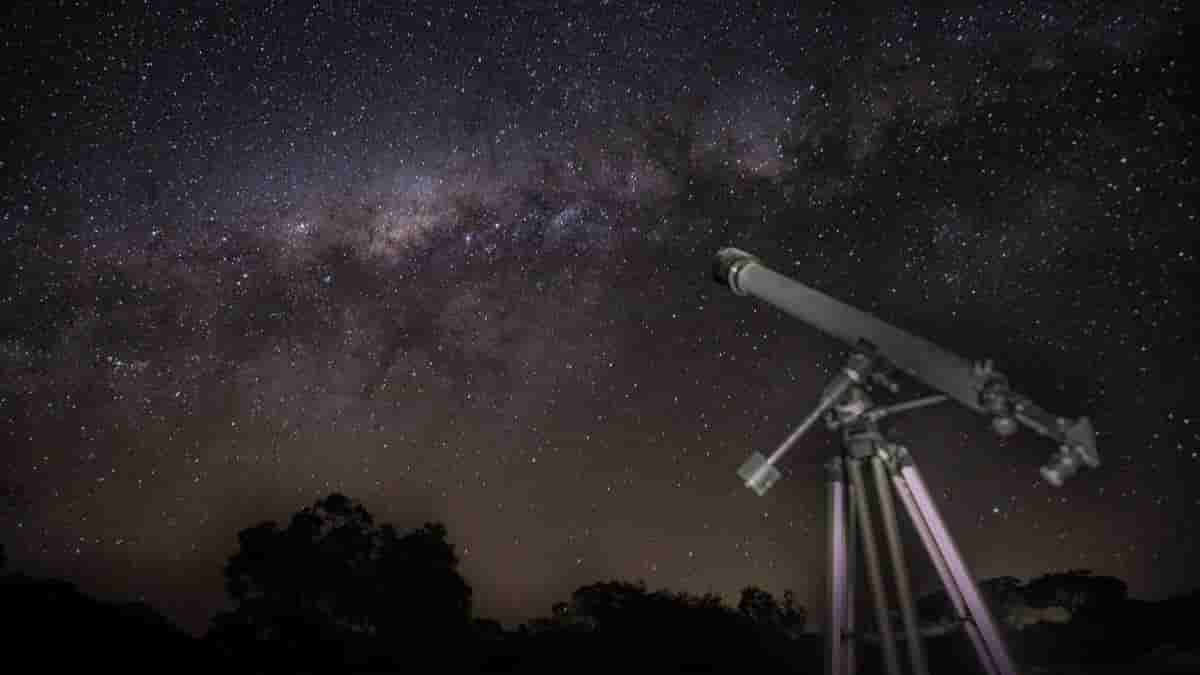How far in space can the normal human eye reach out to?

We have been hearing about the universe since our school’s science classes. The sky, the stars, the galaxies, constellations, the planets, telescopes and the list goes on. Some of you might be stargazers. Laying down leisurely on a lawn in a summer night and watching the stars hover upon you might be your go to view. Some of you might have written poems about the moon. Some of you might be constantly analyzing piles and years of research about the cosmos and its various phenomenon. To sum it up, all of us are drawn to the universe in some way or the other.
Now the question is how far from us does these constituents of the universe exists? The stars for example, we can watch them twinkling from the earth’s surface. We see the moon as well. However, do we see all the other elements of the universe that we have heard about? Therefore, what is the most distant object of the universe that our eye can observe from the earth’s surface?
According to scientific reports, the most distant object that we can see from the earth’s surface with our naked eye is Saturn. The Saturn stands at a distance of 1.5 km away. The Moon, on the other hand stands at a distance of 385,000 km away from the Earth, while the sun stands at 150 million km. The human eye, in the most darkest condition is capable of seeing stars at a magnitude of 6.5 or greater. Sirius, the brightest star in the sky stands at a distance of 8.6 light years. Deneb, the most distant bright star is located 1500 light years away from the earth. There exists a couple of bright stars, which the human eye might be able to barely notice, within the 8000 light year range. When a star detonates, we see it much farther away. 1006 supernova was the brightest in the history, which was recorded in China, Japan and the Middle East. It happened at a distance of 7200 light years away.
Other than the stars, we can see other lager structures as well. The Large Magellanic Cloud, which is 160,000 light years away and the Small Magellanic Cloud, which is 200,000 light years away, is visible from the Southern Hemisphere. The most distant thing that our bare eyeball can see is the Andromeda Galaxy. It stands at 2.6 million light years away and looks like a fuzzy blob in dark skies.
With the help of a binocular, it is possible that we can see fainter stars and galaxies at a distance of 10 million light years away. Whereas, a telescope would facilitate a little more. We would be able to see the brightest quasars that stands at more than 2 billion light years away, with the use of a regular 8-inch telescope. The Hubble space telescope that uses gravitational lenses can see galaxies, which stand at a distance where the light year had abandoned them hundreds of millions of years after the Big Bang.
That was a rough overview of the distant possibilities when it comes to observing the universe with our eye. So the next time, make sure your eyes are on the lookout for them.


